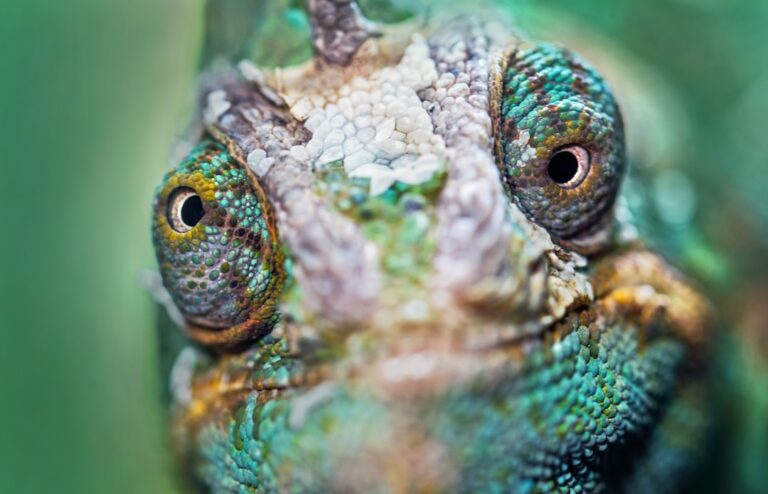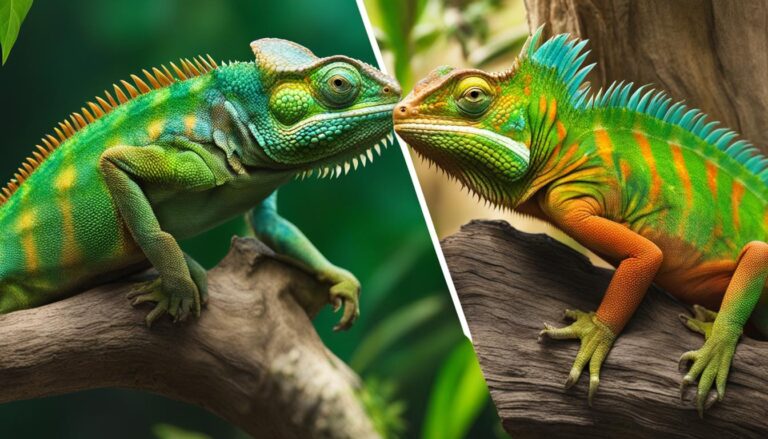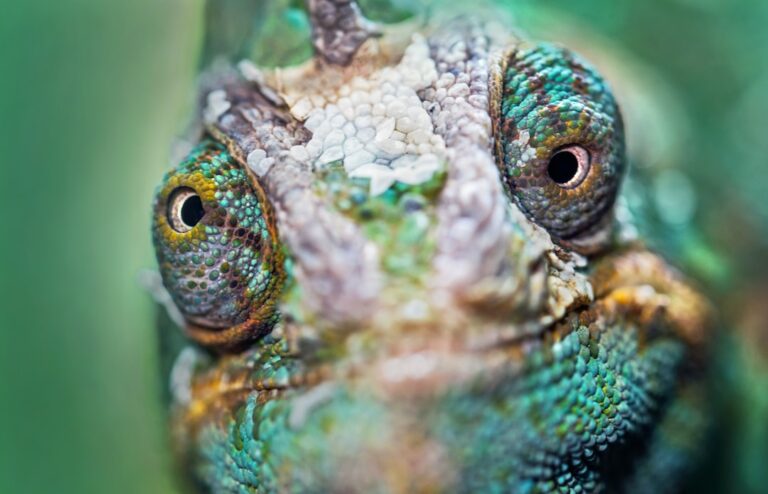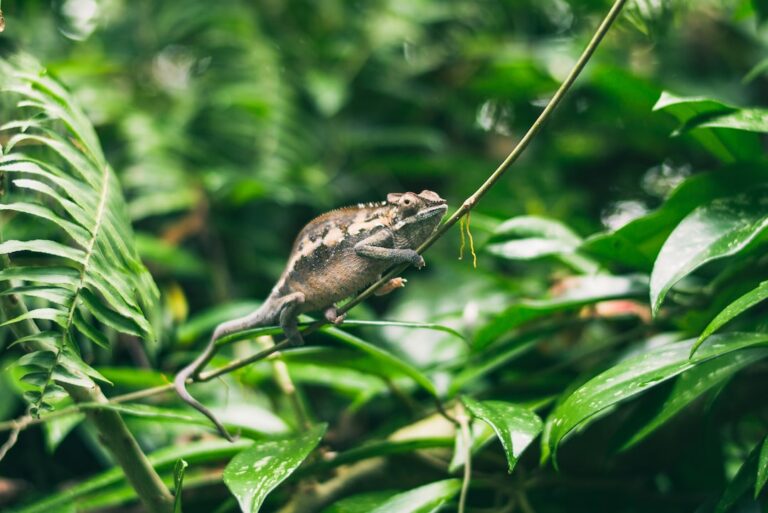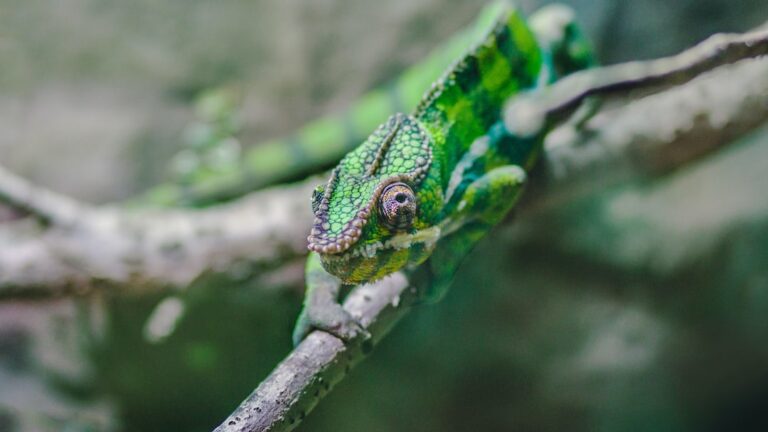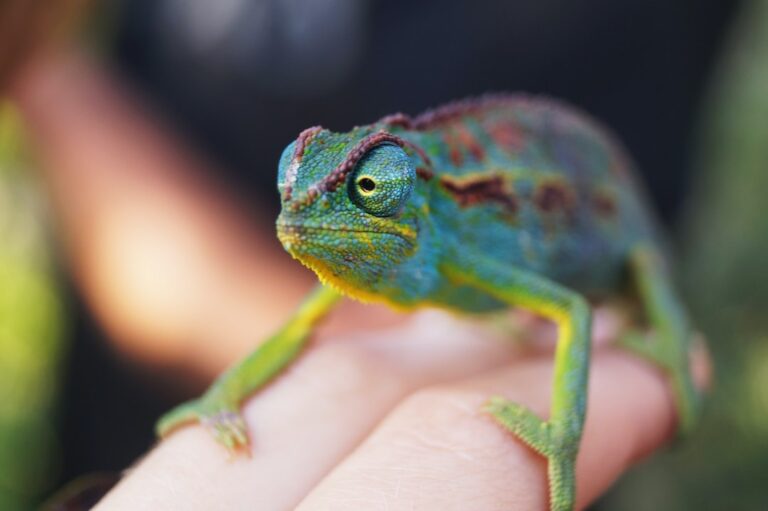Can Chameleons Fall?
Chameleons are fascinating creatures known for their ability to change color and their unique eyes. They belong to the family Chamaeleonidae and are native to Africa, Madagascar, and parts of southern Europe, Asia, and the Middle East. Chameleons are known for their distinctive appearance, with their long, slender bodies, prehensile tails, and independently moving eyes.
One of the most remarkable abilities of chameleons is their ability to change color. They can change their skin color to blend in with their surroundings or to communicate with other chameleons. This color change is achieved through the movement of specialized cells called chromatophores in their skin. These cells contain pigments that can expand or contract, allowing the chameleon to display a wide range of colors.
Another unique feature of chameleons is their eyes. Unlike most other reptiles, chameleons have independently moving eyes that can rotate and focus on different objects simultaneously. This gives them a 360-degree field of vision and allows them to have excellent depth perception. Their eyes also have a specialized structure that enables them to see in both visible and ultraviolet light.
Table of Contents
Understanding the Anatomy of a Chameleon’s Feet
Chameleons have specialized feet that are adapted for climbing and gripping onto surfaces. Their feet are zygodactylous, meaning they have two toes facing forward and two toes facing backward. This arrangement allows them to have a strong grip on branches and other surfaces.
The toes of chameleons are equipped with sharp claws that help them cling onto surfaces. These claws can be extended or retracted as needed. The feet also have specialized pads called lamellae, which are covered in tiny hair-like structures called setae. These setae increase the surface area of the foot, providing more contact with the surface and enhancing the chameleon’s grip.
Chameleons use their feet to grip onto surfaces in a unique way. When they climb, they wrap their toes around the branch or surface and use their muscles to create a tight grip. This allows them to move easily and securely in their arboreal habitat.
Can Chameleons Fall from Trees?
Chameleons are arboreal creatures, meaning they spend most of their time in trees. They have adapted to this habitat by developing specialized feet and a strong grip that allows them to navigate the branches with ease. However, despite their excellent climbing abilities, chameleons can still fall from trees.
There are several reasons why chameleons may fall from trees. One common reason is that they may lose their grip on a slippery or unstable surface. This can happen if the branch is wet or covered in moss or if the chameleon is trying to navigate a particularly challenging terrain.
Another reason for falls is when chameleons make a misjudgment while jumping or leaping between branches. They may underestimate the distance or angle and end up falling instead of landing on their intended target.
Factors that Affect a Chameleon’s Ability to Grip onto Surfaces
Several factors can affect a chameleon’s ability to grip onto surfaces. One important factor is the condition of the surface itself. If the branch or surface is wet, covered in moss, or otherwise slippery, it can be more challenging for the chameleon to maintain its grip.
The health of the chameleon also plays a role in its ability to grip onto surfaces. If a chameleon is sick or injured, it may not have the strength or coordination necessary to maintain a secure grip. In such cases, even a slight disturbance or movement can cause the chameleon to lose its balance and fall.
Additionally, environmental factors such as wind or rain can also affect a chameleon’s ability to grip onto surfaces. Strong winds can make it difficult for the chameleon to maintain its balance, while heavy rain can make the branches slippery and increase the risk of falling.
How Do Chameleons Adapt to Different Environments?
Chameleons are highly adaptable creatures that can adjust to different environments. They have evolved to live in a variety of habitats, including rainforests, deserts, and mountains. Their ability to change color helps them blend in with their surroundings and avoid predators.
In different environments, chameleons may have different adaptations in their feet and grip. For example, chameleons that live in rainforests may have longer toes and more flexible feet to navigate the dense vegetation. On the other hand, chameleons that live in arid environments may have shorter toes and stronger claws to grip onto rocky surfaces.
Chameleons also have the ability to adjust their grip strength depending on the surface they are climbing. They can modulate the tension in their muscles to ensure a secure grip without exerting unnecessary energy.
Chameleon Species that are More Prone to Falling
While all chameleon species have adapted to climbing trees, some species are more prone to falling than others. This can be due to a variety of factors, including their habitat, body structure, and behavior.
For example, species that inhabit dense rainforests with a complex network of branches may be more prone to falling due to the challenging terrain. These species may need to navigate through thick vegetation and make frequent jumps or leaps between branches, increasing the risk of falls.
Species with larger bodies and heavier tails may also be more prone to falling. The weight distribution can affect their balance and make it more difficult for them to maintain a secure grip on branches.
Additionally, some species may be more adventurous or less cautious than others, increasing their likelihood of taking risks and potentially falling. These species may be more inclined to explore new territories or engage in aggressive behaviors, putting them at a higher risk of falling.
The Risks of Falling for Chameleons in the Wild
Falling from trees can pose significant risks for chameleons in the wild. The impact of the fall can cause injuries or even death. Chameleons have delicate bodies and are not built to withstand high-impact falls.
Injuries from falls can range from minor bruises and sprains to more severe fractures or internal injuries. Even a relatively short fall can have serious consequences for a chameleon’s health and well-being.
Falling can also leave chameleons vulnerable to predators. When they fall to the ground, they may be exposed and unable to escape quickly. This makes them an easy target for predators such as birds, snakes, or mammals.
How Chameleons Protect Themselves from Injuries when Falling
Chameleons have developed several strategies to protect themselves from injuries when falling. One of these strategies is the use of their tails to cushion their fall. When a chameleon falls, it will often extend its tail to create a parachute-like effect, slowing down its descent and reducing the impact on its body.
The tail acts as a shock absorber, absorbing some of the force from the fall and preventing it from being directly transmitted to the chameleon’s body. This helps to minimize the risk of fractures or other injuries.
In addition to using their tails, chameleons also have flexible bodies that allow them to absorb the impact of a fall. Their bones are lightweight and have a certain degree of flexibility, which helps to distribute the force of the fall more evenly throughout their body.
The Role of Tail Autotomy in Chameleon Falls
Tail autotomy is another mechanism that helps chameleons during falls. Autotomy refers to the ability of an animal to voluntarily shed or detach a body part. Chameleons have the ability to shed their tails when they are under threat or in danger.
When a chameleon falls, it may choose to shed its tail as a last resort to protect itself from injury. By detaching its tail, the chameleon can reduce its weight and increase its chances of surviving the fall.
The detached tail continues to move and thrash around, distracting predators and allowing the chameleon to escape. The chameleon can later regenerate a new tail, although it may not be as long or as functional as the original.
The Importance of Understanding Chameleon Behavior and Anatomy
Understanding chameleon behavior and anatomy is crucial for their conservation and well-being. By understanding how chameleons grip onto surfaces and how they adapt to different environments, we can better protect their natural habitats and ensure their survival.
It is also important to raise awareness about the risks that chameleons face in the wild, including the dangers of falling from trees. By educating the public about these risks, we can encourage responsible behavior and help minimize human-induced threats to chameleons.
Ultimately, chameleons are unique creatures with incredible abilities. Their ability to change color, their independently moving eyes, and their specialized feet make them truly remarkable. By appreciating and protecting these fascinating creatures, we can contribute to the preservation of biodiversity and the natural world.
If you’re interested in learning more about chameleons, you might also want to check out this article on why do chameleons dig?. It explores the fascinating behavior of chameleons and provides insights into why they engage in this unique digging behavior. Understanding their natural instincts and habits can help us better care for these incredible reptiles.


